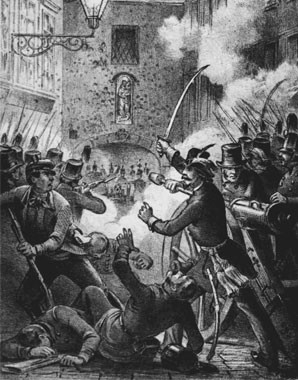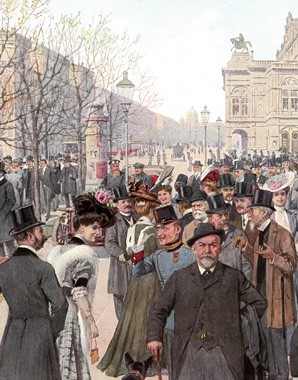Protection from the proletariat
A system of fortifications forming a triangle around the city centre was intended to protect Vienna not only from external enemies but also from its own citizens in the case of revolution.
For those who advocated the razing of the city walls, the resulting areas and the glacis represented valuable building land in a prime location. However, the army was still demanding a fortification complex. Since the revolution of 1848 there had been fears of potential insurgency by the suburban proletariat and it was believed that this could be contained by the city walls.
These fears led to the construction of barracks that were not primarily directed against external foes but against the ‘enemy within’: thus the elevated site of the Arsenal in the south of Vienna (built between 1849 and 1856 as part of the fortification triangle around the city centre) meant that the city could be bombarded if the necessity arose.
The sprawling complex of the Arsenal served as barracks, munitions factory, military history museum and bulwark against the potentially seditious Viennese populace. The Historicist architecture gave the complex the appearance of a fortified structure.
The Ringstrasse also fulfilled a military purpose: despite its name, it is not exactly circular in form but a polygon, thus giving a free line of fire and facilitating the deployment of troops. The width of the boulevard was intended to prevent barricades being set up.
















